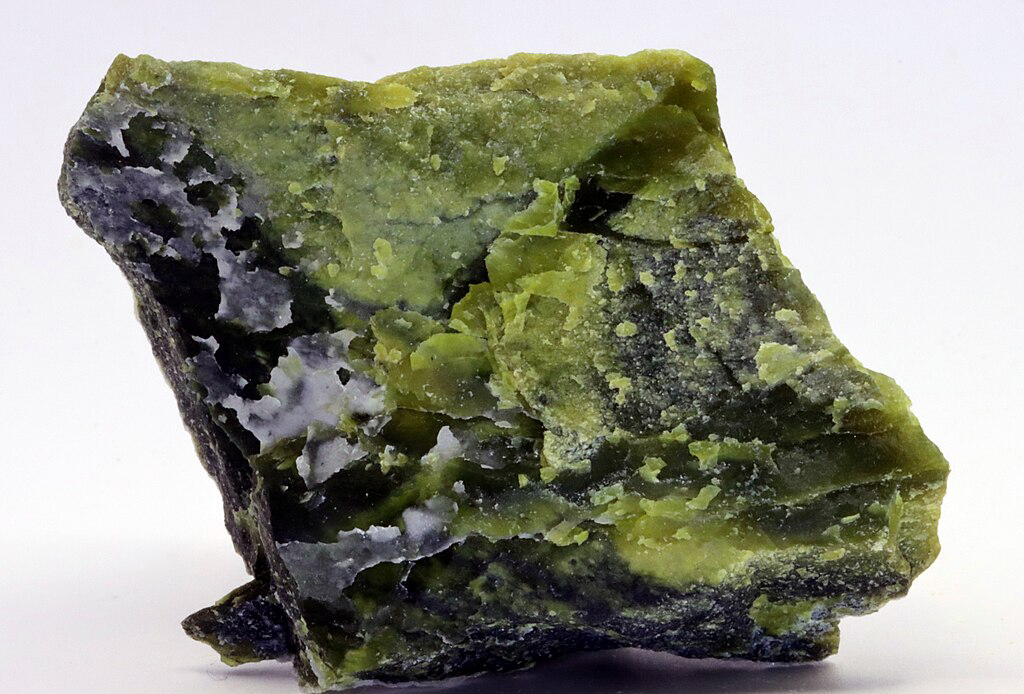Serpentine
In the world of amateur rockhounds, you may hear people call all sorts of different green rocks that they find “serpentine.” They might not always be right, but because serpentine isn’t really a single mineral, it’s more of a type of mineral (a “subgroup”), and more than a dozen minerals can be called serpentine, those rockhounds’ odds of being right are not too bad. Aside from green, serpentine minerals can be white, brown, yellow, blue, or gray. They can also have different habits and textures—fibrous like asbestos, hard but waxy like lizardite, hard but scaly like antigorite—and be translucent or opaque. The reason serpentine minerals have so much variety is because they’re made of the broken down parts of several other types of minerals in metamorphic rocks. Depending on how much heat, how much pressure, and how much of specific elements are in the rocks, different serpentine minerals will form, all together in big masses. You won’t find any crystals of serpentine, although you can find crystals of other things in it, such as magnetite or magnesite. The process of making serpentine minerals is so common, scientists even have a name for it: serpentinization—that’s a mouthful!
| Formula | Group or Type | Shape | Hardness | Specific Gravity | Streak | Luster |
|---|---|---|---|---|---|---|
| (Mg,Fe,Ni)3Si2O5(OH)4 | — | Monoclinic | 3.5–5.5 | 2.5–2.6 | Greenish white | Subvitreous to dull |
